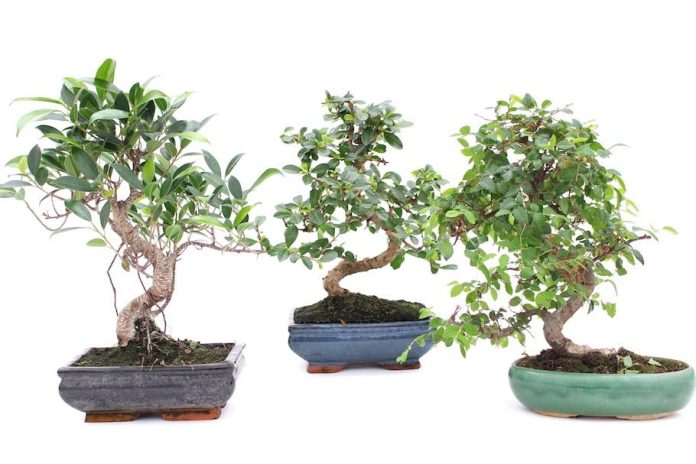Indoor vs Outdoor Bonsai Trees
Understanding the Basics of Bonsai
Bonsai is more than a decorative plant—it’s a living art form rooted in centuries of Eastern tradition. The term “bonsai” literally means “planted in a container” (see Wikipedia: Bonsai). The goal is to balance proper care, aesthetic design, and the right environmental conditions.
Environment Matters: Indoor vs Outdoor
Indoor Bonsai Trees
Indoor bonsai trees, typically tropical or subtropical species, thrive in stable, controlled indoor environments. Common varieties include Ficus, Schefflera (Hawaiian umbrella), Fukien Tea, and flowering species like Bougainvillea. These trees require:
- Bright, indirect light—ideally near south-facing windows or under grow lights.
- Consistent temperatures between 60–75 °F (15–24 °C).
- Higher humidity is often supplemented with humidifiers or pebble trays.
The main advantages are easy access to care, year-round growth, and decorative appeal. However, challenges include ensuring adequate light, managing indoor humidity, and staying vigilant for pests like spider mites and scale.
Outdoor Bonsai Trees
Outdoor bonsai trees—such as Japanese maple, juniper, pine, elm, and ginkgo—require exposure to natural seasons. These trees:
- Need full sun or partial shade, depending on the species.
- Require seasonal changes, including dormancy in winter for temperate species.
- Benefit from natural rainfall and airflow, which reduces disease pressure.
The upside is vigorous growth and stunning natural cycles. But you must guard against frost, strong winds, pests, and excessive rain that can cause root rot.
Key Comparisons
Light Requirements
Indoor: Needs supplemental lighting. Sunlight indoors is weaker.
Outdoor: Natural sunlight—ideal if your climate is appropriate.
Seasonal Needs
Indoor: No dormancy—tropical species are better.
Outdoor: Temperate species require winter dormancy and protection during extreme weather.
Humidity & Airflow
Indoor: Often dry—needs trays, misting, or humidifiers.
Outdoor: Generally sufficient natural airflow and humidity, though dry climates may necessitate watering.
Pest & Disease Management
Indoor: Susceptible to mites, scale, fungal issues—but easier to monitor.
Outdoor: More exposure to insects, birds, and fungal spores—regular monitoring and protective sprays are essential.
Choosing Based on Your Lifestyle
Space & Location
If you have a sunny balcony or garden, outdoor bonsai is ideal. For limited or indoor-only spaces, choose tropical indoor species.
Time Commitment
Indoor bonsai require regular care—daily watering, leaf dusting, and pest checks. Outdoor bonsai also need seasonal adjustments and protection during extreme weather.
Beginner Tips
For first-timers, Ficus (indoor) or Juniper (outdoor) are forgiving and resilient. Strategies include:
- Starting with one species and mastering its care routine.
- Using soil with good drainage, water when the soil appears dry.
- Pruning when young shoots alter the desired shape.
- Repotting every 2–5 years to refresh the soil and control root growth.
Typical Species Breakdown
| Species | Environment | Highlights |
|---|---|---|
| Ficus | Indoor | Tolerant, easy care, strong roots |
| Schefflera | Indoor | Low light, flowering, minimal pruning |
| Japanese Maple | Outdoor | Gorgeous seasonal colors, shade preferable |
| Juniper | Outdoor | Hardy, drought-resistant, rugged styling |
| Pine | Outdoor | Classic bonsai look, needs full sun, and pruning |
Care Checklist
Watering
Check top inch of soil daily. Water until it drains. Avoid standing water in saucers.
Lighting
Ensure 6+ hours of bright light or strong artificial lighting.
Pruning & Wiring
Trim shoots as they appear. Wire during dormancy if outdoors, or during slower growth if indoors.
Fertilization
Use a balanced N-P-K formula. After watering, feed monthly during active growth; reduce in dormancy.
Repotting
Every 2–5 years. Remove roots, refresh soil. For indoor tropicals, early spring. Outdoor temperate trees also in spring.
Why Choose BonsaiTreeForSale.net?
At BonsaiTreeForSale.net, we guide you from choosing your first bonsai to maintaining a thriving, miniature masterpiece. Our expert care tips and curated selection fit every environment and skill level.
Explore our collection of beautiful bonsai species, with detailed buying and maintenance guides.
Final Verdict: Which Should You Buy?
If you have the right space, go for outdoor bonsai to enjoy seasons and vigorous growth. If your space is indoors-only, choose a tropical indoor bonsai that fits your light conditions and commit to consistent care.
Ultimately, choose a bonsai you’ll visit daily, learn from, and let grow as your hands shape its future:
Further Learning & Resources
